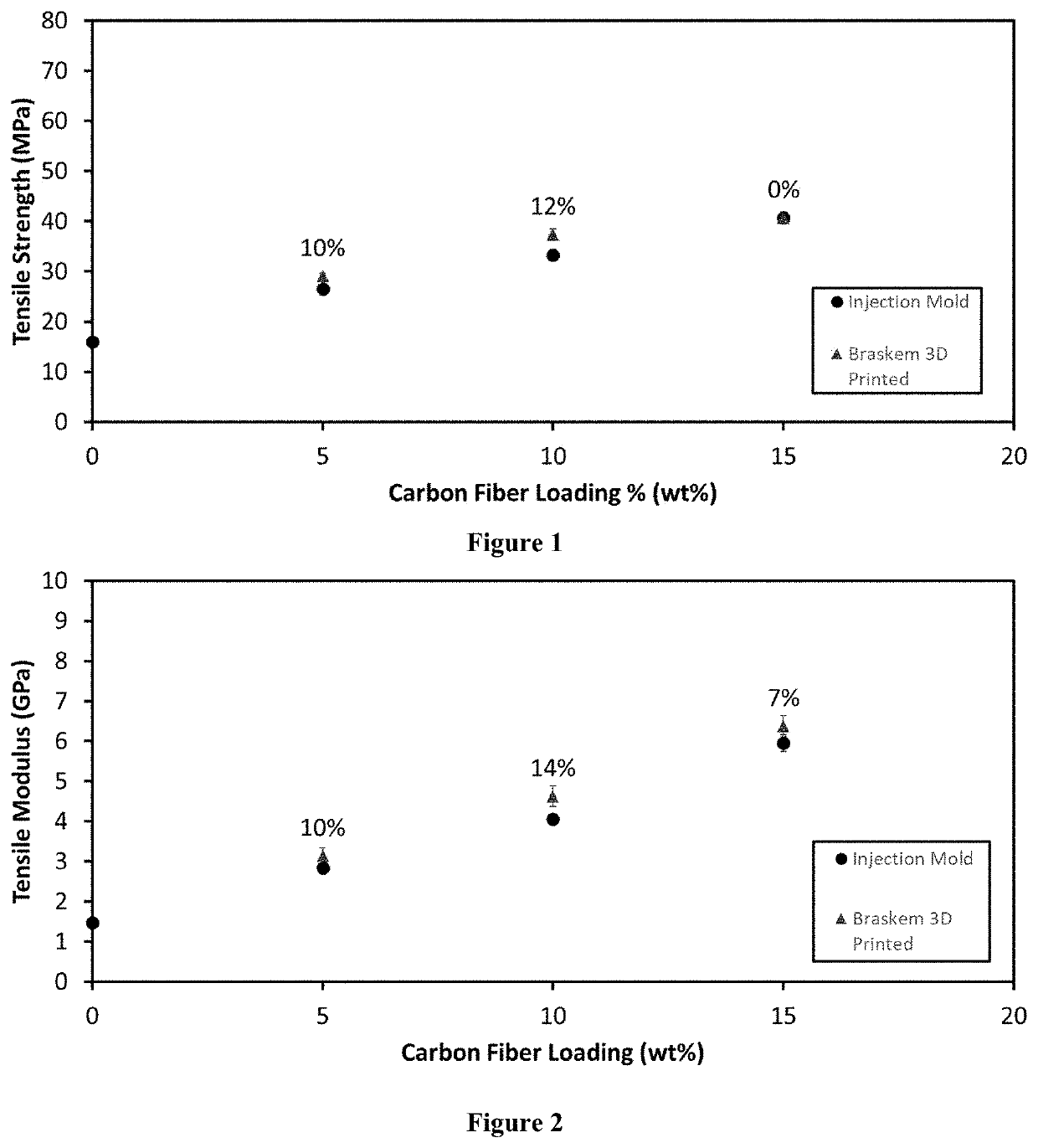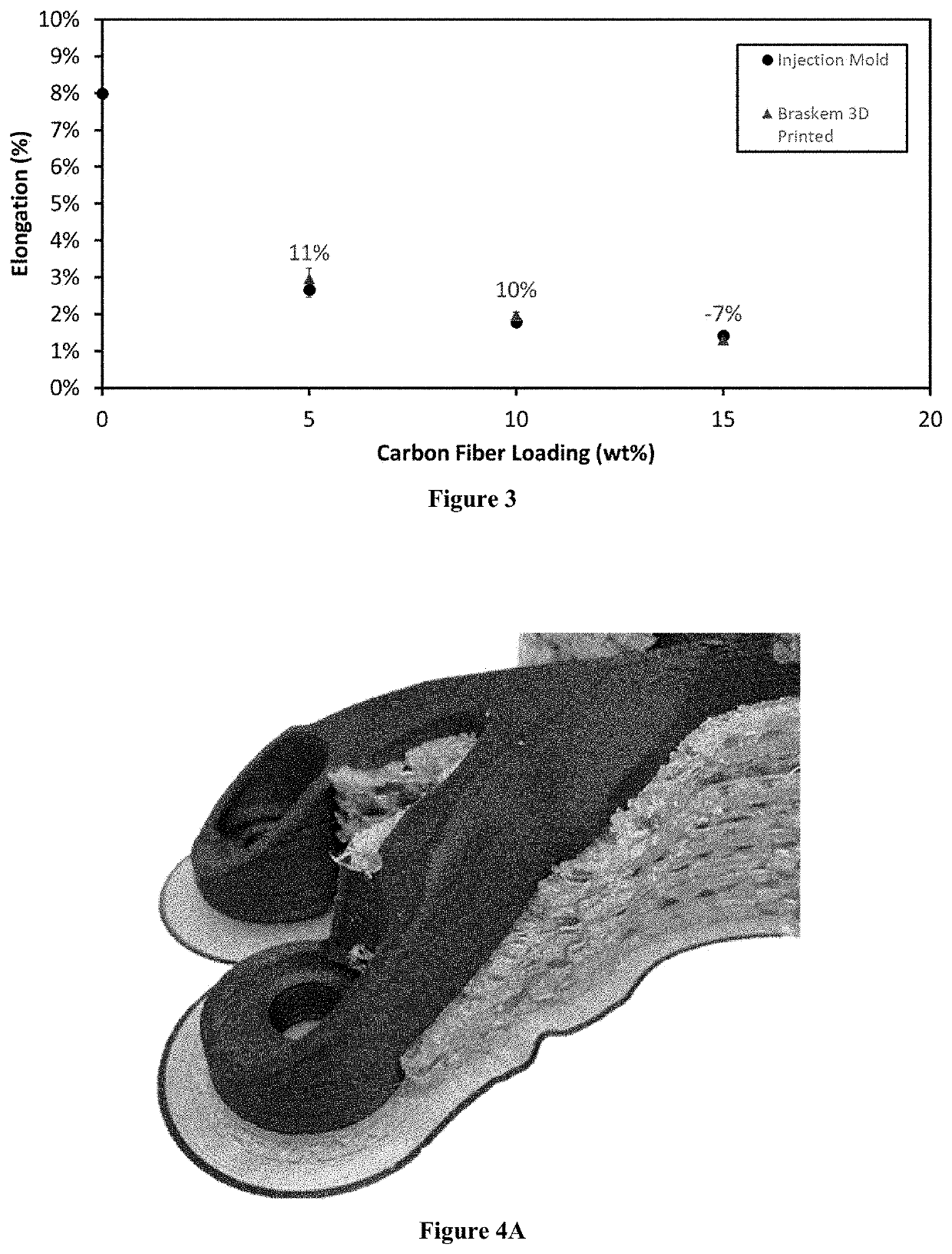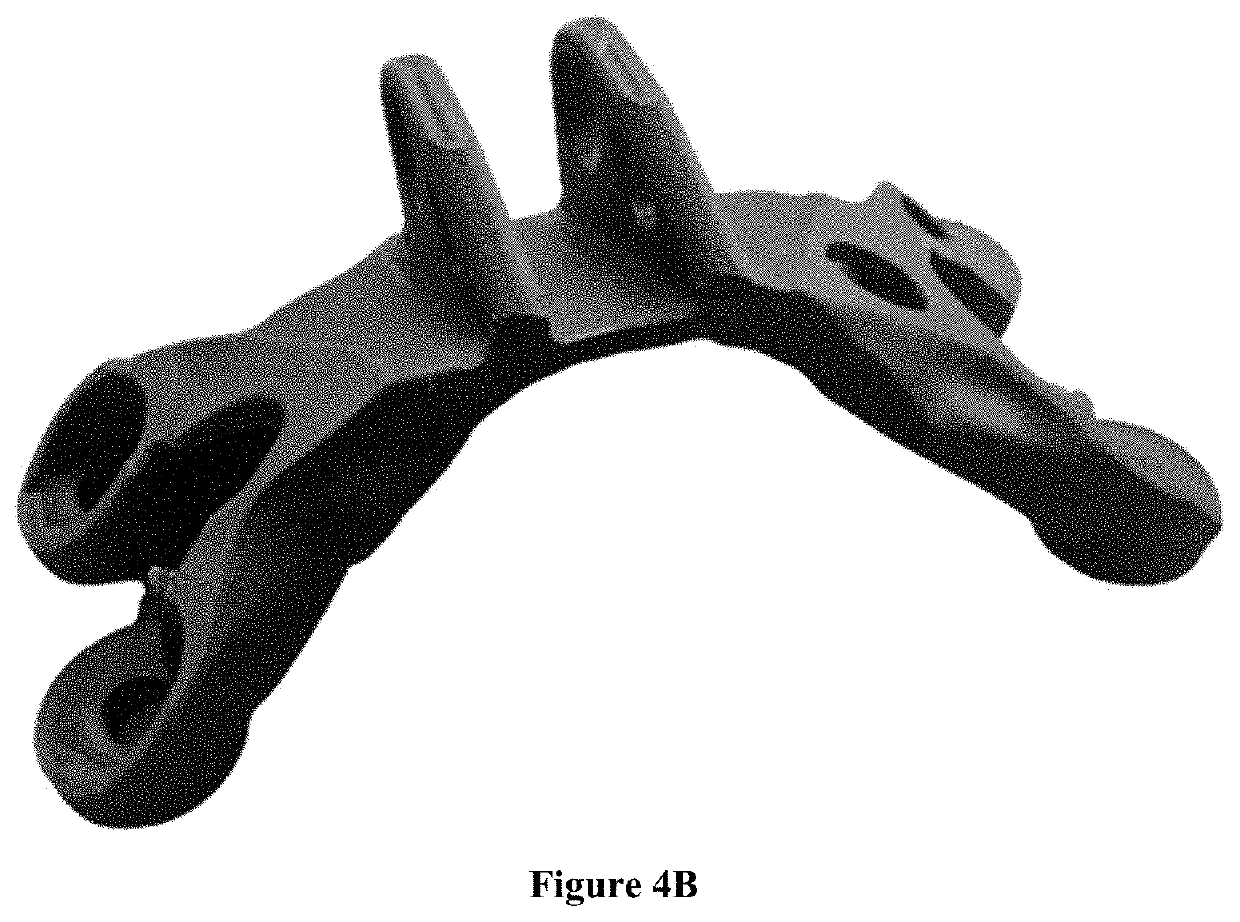Fiber-blended heterophasic copolymer for additive-manufacture feedstock
a heterophasic copolymer and additive-manufacturing technology, applied in the direction of additive manufacturing, manufacturing tools, additive manufacturing apparatus, etc., can solve the problems of material-extrusion-based 3d printing technology sensitive to part warpage, deformation of printed parts, and catastrophic failure of the printing process itsel
- Summary
- Abstract
- Description
- Claims
- Application Information
AI Technical Summary
Benefits of technology
Problems solved by technology
Method used
Image
Examples
example 1
Manufacture Feedstock Having Heterophasic Polypropylene Copolymer Blended with Carbon Fiber
[0097]A commercially available Braskem heterophasic polypropylene impact copolymer, having a disperse phase within 10-50 wt % based on an ethylene-based elastomer, and a melt flow rate of 9 g / 10 min, measured according to ASTM D 1238 (230° C. / 2.16 kg), in the form of pellets was used as the base matrix. A carbon fiber coated in maleic anhydride grafted polypropylene was blended with the heterophasic polypropylene impact copolymer, with a loading of the carbon fiber at 5-15 wt %.
[0098]Tests of filament production and 3D printing by Fused Filament Fabrication (FFF) technology with produced filaments were conducted with these fiber-blended heterophasic copolymer samples.
[0099]The fiber-blended heterophasic copolymers were extruded at 190° C. through a single screw extruder to form a filament having a constant diameter of 1.75 mm (±0.05) or 2.85 mm (±0.05). The filament obtained was wound on a spo...
example 2
r Measuring the Warpage Resistance Rating
[0109]To evaluate the warpage resistance rating of an additive-manufacture feedstock in the form of a printed article (whether an inventive additive-manufacture feedstock or a comparative additive-manufacture feedstock), a number of specimens are printed and measured. In this example, three specimens are printed and measured for the warpage resistance rating evaluation.
[0110]Three 60 mm×60 mm×60 mm, open-ended boxes are printed with the additive-manufacture feedstock to be evaluated. For each printing, the print orientation is X-Y, as shown in FIG. 5A. The thickness of each wall is 1 mm.
[0111]The printing program used to print each specimen develops a model of the specimen to be printed, and the expected height for any edge of the object is defined the model. FIG. 5B shows one printed open-ended, thin-walled box, which overlays the expected height of one edge from the model. FIG. 5B also shows the measured height of the printed open-ended, th...
example 3
nts of the Warpage Resistance Rating
[0122]To illustrate the minimized warpage exhibited by the additive-manufacture feedstock according to this invention, the warpage resistance rating of the inventive additive-manufacture feedstock in the form of a printed article was determined, and compared against the warpage resistance rating of two comparative additive-manufacture feedstock. The warpage resistance rating for the inventive additive-manufacture feedstock and the two comparative additive-manufacture feedstock were determined based on the method described in Example 2.
[0123]The inventive additive-manufacture feedstock was prepared according to Example 1. A commercially available Braskem heterophasic polypropylene impact copolymer, having a disperse phase of about 28 wt % (estimated by the amorphous content measured by xylene soluble content on polypropylene, according to ASTM D5492-17) based on an ethylene-based elastomer, and a melt flow rate of 9 g / 10 min, measured according to ...
PUM
| Property | Measurement | Unit |
|---|---|---|
| melt flow rate | aaaaa | aaaaa |
| thickness | aaaaa | aaaaa |
| thickness | aaaaa | aaaaa |
Abstract
Description
Claims
Application Information
 Login to View More
Login to View More - R&D
- Intellectual Property
- Life Sciences
- Materials
- Tech Scout
- Unparalleled Data Quality
- Higher Quality Content
- 60% Fewer Hallucinations
Browse by: Latest US Patents, China's latest patents, Technical Efficacy Thesaurus, Application Domain, Technology Topic, Popular Technical Reports.
© 2025 PatSnap. All rights reserved.Legal|Privacy policy|Modern Slavery Act Transparency Statement|Sitemap|About US| Contact US: help@patsnap.com



